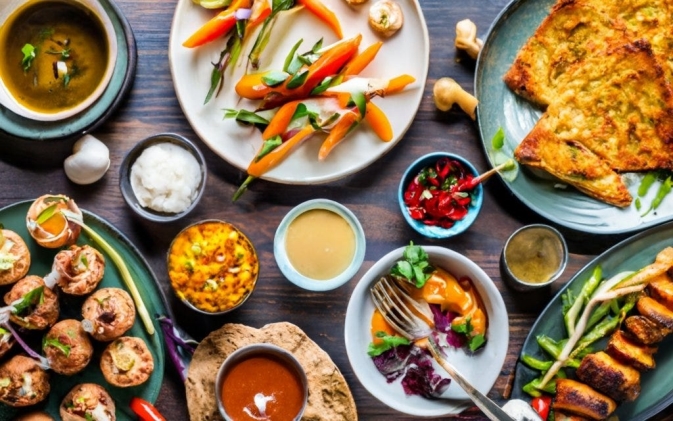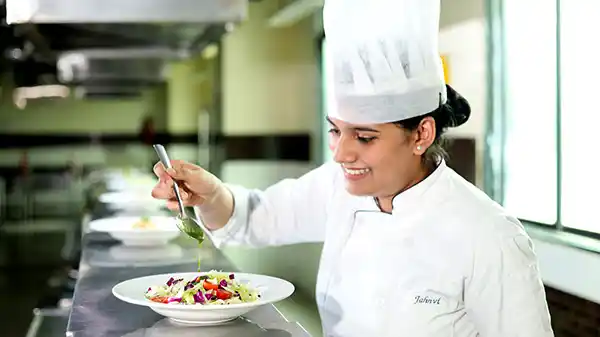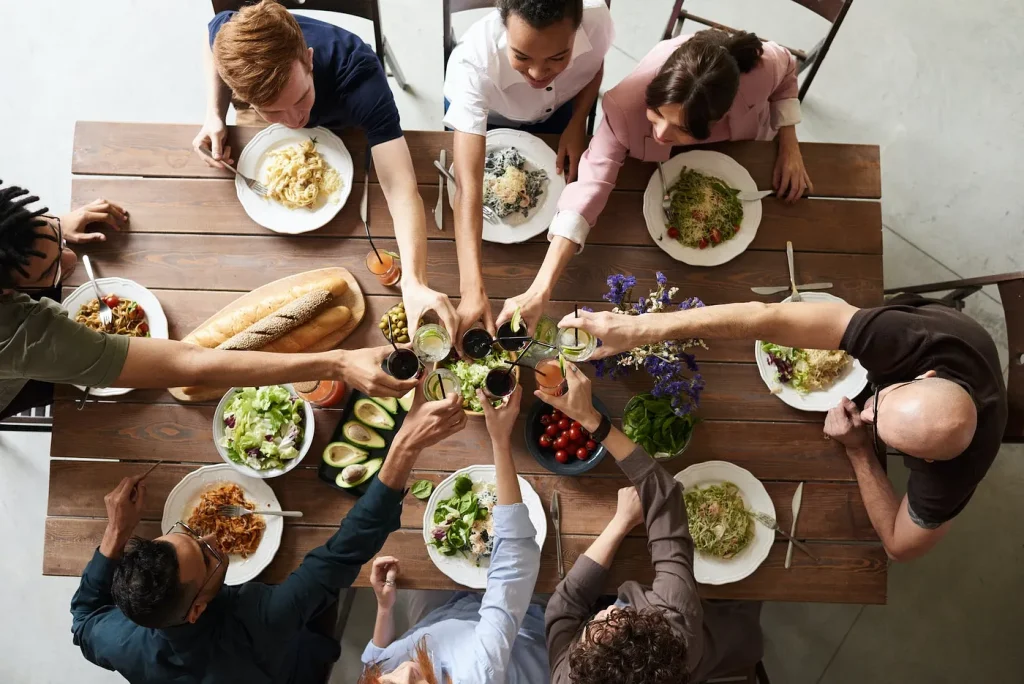Farm-to-table dining is more than just a trend—it’s a movement that celebrates locally sourced ingredients and supports sustainable farming practices. By prioritizing fresh, seasonal produce from nearby farms, restaurants can create dishes that not only taste delicious but also contribute to the health of the environment and local communities. From vibrant salads bursting with just-picked vegetables to succulent main courses featuring grass-fed meats, farm-to-table restaurants offer a culinary experience that’s as good for the planet as it is for your taste buds.

Fusion Cuisine: Where Tradition Meets Innovation
Fusion cuisine is all about blending culinary traditions from different cultures to create exciting and unique flavor combinations. By drawing inspiration from diverse culinary heritages, chefs can craft dishes that are both familiar and unexpected, offering diners a taste of the world on a single plate. Whether it’s a sushi burrito that combines Japanese sushi with Mexican flavors or a kimchi quesadilla that puts a Korean twist on a classic Mexican dish, fusion cuisine invites diners to embark on a culinary adventure without ever leaving their seat.
Every city has its hidden culinary gems—those tucked-away restaurants and eateries that locals swear by but tourists often overlook. Whether it’s a tiny hole-in-the-wall serving up the best tacos in town or a family-owned bakery known for its mouthwatering pastries, these hidden gems offer a taste of authentic local flavor that can’t be found anywhere else. From secret menu items to off-the-beaten-path locations, exploring these culinary hidden gems is a delicious adventure waiting to be had.
From Street Food to Fine Dining: The Evolution of Food Culture
Food culture is constantly evolving, influenced by factors ranging from globalization and immigration to changing tastes and trends. One of the most visible signs of this evolution is the blurring of lines between street food and fine dining. What was once considered cheap and casual fare is now being elevated to gourmet status, with food trucks serving up gourmet burgers and Michelin-starred chefs putting their own spin on classic street food dishes. This convergence of culinary worlds offers diners the opportunity to experience the best of both worlds, with high-quality cuisine available at every price point.
Food tourism is on the rise, with more and more travelers planning their trips around culinary experiences. From food festivals and farmers’ markets to cooking classes and gourmet tours, there’s no shortage of ways to explore a destination through its food. Whether it’s sampling street food in Bangkok, savoring seafood in Barcelona, or indulging in pasta in Rome, food tourism offers a delicious way to connect with local culture and traditions while satisfying your appetite for adventure.
Culinary Education: Learning the Art of Cooking

Culinary education plays a crucial role in shaping the future of food and restaurant culture. From professional culinary schools to community cooking classes, there are countless opportunities for aspiring chefs and home cooks alike to hone their skills and learn the art of cooking. By mastering techniques, exploring flavor profiles, and experimenting with ingredients, students can gain the knowledge and confidence they need to succeed in the kitchen. Whether pursuing a career in the culinary industry or simply seeking to expand their culinary repertoire, culinary education empowers individuals to create delicious and memorable meals.
Sustainability isn’t just about sourcing local ingredients—it’s also about minimizing food waste in the kitchen. Chefs and restaurants are increasingly embracing creative ways to repurpose leftover ingredients and minimize their environmental footprint. From composting food scraps to incorporating “ugly” produce into dishes, there are numerous strategies that restaurants can employ to reduce waste and promote sustainability. By prioritizing sustainability in the kitchen, chefs can not only reduce their impact on the planet but also inspire others to adopt more eco-friendly practices in their own lives.
The Art of Food Pairing: Elevating the Dining Experience
Food pairing is a delicate art that involves matching flavors, textures, and aromas to create harmonious and memorable dining experiences. Whether it’s pairing wine with cheese or crafting the perfect combination of ingredients for a tasting menu, food pairing adds an extra layer of depth and complexity to the dining experience. By understanding the principles of flavor compatibility and balance, chefs can create dishes that delight the senses and leave a lasting impression on diners. From classic pairings like steak and red wine to more adventurous combinations like chocolate and chili, the art of food pairing offers endless opportunities for culinary creativity.
Technology is revolutionizing the way we eat and dine, from online reservation platforms and digital menus to food delivery apps and smart kitchen appliances. These innovations are not only making it easier for consumers to access and enjoy food but also empowering chefs and restaurateurs to streamline operations and enhance the dining experience. Whether it’s using data analytics to optimize menu offerings or harnessing AI-powered cooking assistants to improve efficiency in the kitchen, technology is shaping the future of the food industry in exciting and unexpected ways. By embracing these innovations, restaurants can stay ahead of the curve and continue to delight diners with innovative and memorable culinary experiences.
Food has long been regarded as a form of artistic expression, with chefs pushing the boundaries of culinary creativity to create dishes that are as visually stunning as they are delicious. From intricate plating techniques to avant-garde flavor combinations, chefs are constantly exploring new ways to elevate food to the level of art. This intersection of food and creativity offers a feast for the senses, inviting diners to engage with their meals on a deeper level and appreciate the craftsmanship and ingenuity that goes into each dish. Whether dining at a Michelin-starred restaurant or sampling street food from a local vendor, food lovers around the world can appreciate the artistry and passion that goes into creating memorable culinary experiences.

